Investing, experimenting and collaborating in a changing market for horticultural solutions. How do you respond to the increasing demand for complete cultivation systems with knowledge and technology and contribute to efficient ornamental, food and herb cultivation? Roeland van Dijk, Codema's logistics specialist, explains what the most important developments are and what impact this has on the different systems.
“Recently, the questions the market asks Codema have become broader. At first, a specific discipline determined the question – for me that is the logistics systems in the greenhouse – but, the customer increasingly asks for a complete cultivation system of logistics, watering and lighting. Codema has adapted its services to this,” says Roeland van Dijk, Account Manager for Cultivation Systems. “This has given me a more integrative role and quickly involved other specialists in a project. The nice thing about this is that we quickly get to the real core of the question with the customer: how do I test as efficiently as possible?”
Cultivation system
Van Dijk, who grew up in the greenhouses, is Codema's expert in the field of logistical systems. From this discipline, he has a broad view of the developments in the various markets in which Codema operates – food, ornamental and herbal cultivation and how demand develops by region. In particular, international demand for complete cultivation systems is increasing:
“In the Netherlands and even in Western Europe, regular customers continue to approach us for our expertise around one discipline. But an investor, consulting firm or greenhouse builder who wants to build a large greenhouse in North America or Asia, needs a complete cultivation system. A multidisciplinary team focuses on the design, production and installation of a complete cultivation system. Where this task used to be with the customer himself, Codema relieves the customer of this. The multidisciplinary team ensures that all disciplines of logistics, watering and lighting, seamlessly connect. From the very beginning, we take that into account.”
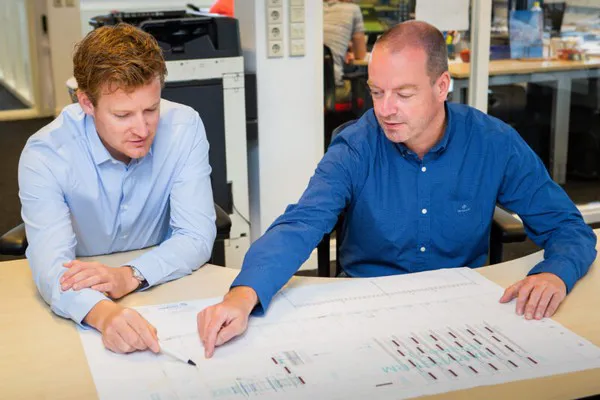
Logistic systems
Logistics systems central to complete high-tech cultivation systems
Van Dijk discusses the main developments in some of the logistics systems:
“On our fixed cultivation tables and roller tables, among other things young plants are grown for vegetable cultivation. In the Netherlands, this is mainly done by specialized companies that sell and deliver their young plants to the final growers. This is possible because in the Netherlands the distances are short. In Russia- but certainly, America or China- the distances for this are often too great.
Besides, the surfaces of tomato greenhouses, for example, are so large that more and more growers or investors are choosing to do the cultivation of young plants themselves. In this way, the cultivation of young plants is an integral part of the operation in the greenhouse. This increases the demand for these fixed cultivation or roller benches. Our logistical expertise is of course indispensable, because how does this fit into the complete design of the greenhouse?”
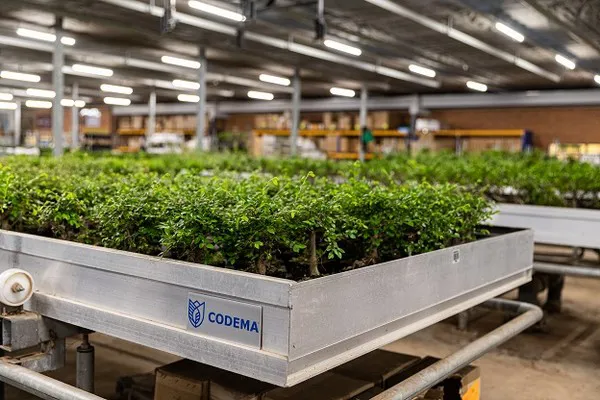
Mobile container systems: a proven solution
“Mobile container systems are the basis by which Codema (then HAWE) took the first steps in logistics in 1975 (then HAWE). Container systems increase flexibility enormously. Through automation, we built the logistics system in a greenhouse like Lego. Our container systems are applicable for practically all global issues, to make cultivation mobile and logistically manageable. This is a solution for both ornamental cultivation, food and even for young plants.
The demand for these systems follows the most important developments in our market; where is the growth? This creates a demand for automation and logistics. In recent years this has been in cannabis cultivation. Before that, it was the ornamental cultivation, and now vertical farming comes is becoming a trend, it is a proven solution and therefore, ideal for many investors and growers. Our company is further distinguished because we not only produce, install and maintain this system but also help design the greenhouse in the preliminary process. We have all the knowledge and experience to organize the greenhouse in such a way that the containers are moved as efficient as possible during all phases.
Moreover, that does not mean that development in this area is at a standstill. We continue to develop and test and come into contact with new challenges daily. For example, we are looking at new materials or systems to make the system safer, more sustainable or more environmentally friendly.”
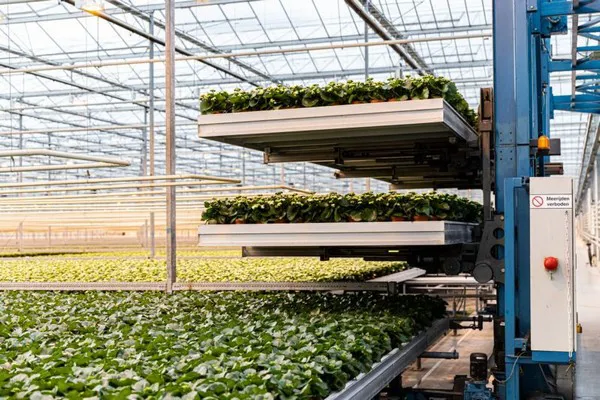
Substrate systems on gutters
“A fantastic system for high wire crops such as cucumber, tomato and pepper. These crops are expected to remain on these systems at all times. There have been previous attempts to get a tomato plant on a mobile system, but that never became cost-efficient. So in the field of logistics, little development takes place here.
The development in the field of gutters or substrate mats is another story. Several parties work hard to make these parts cheaper and more efficient. Of course, colleagues in the field of water management can give all their knowledge and skills in the field of fertigation. But if you walk into a contemporary tomato greenhouse in ten years, I think you’ll still see a fixed setup. ”
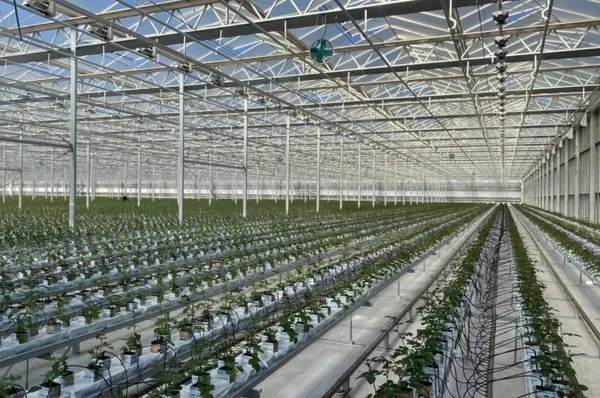
Mobile gutter systems: growing food efficiently
“Food production is a spearhead for us. The mobile gutter system, which was further developed by us, is the solutions for specific crops for efficient cultivation.
When designing a mobile gutter system, knowledge from different disciplines comes together. Water management ensures that the plant gets just enough water and nutrition. In addition, the lighting and climate provide the right growing conditions and software carries out the control and quality control. The logistics aspect is central and ensures that the distance between the gutters is automatically increased during the different growth phases. Together we ensure that the cultivation is grown as efficiently as possible: as little as possible – water, labour, energy or raw materials – is lost.
Developments are rapidly following each other in this area. For example, more variation in crops is possible, and the required labour has been further reduced. In the coming years, we will continue to make strides in this. ”
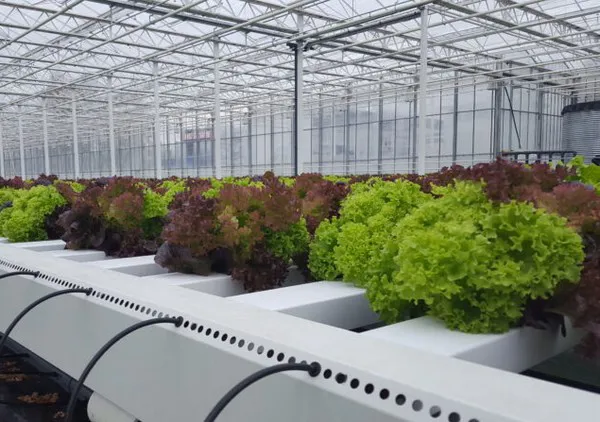
Multilayer cultivation systems
“Multilayer cultivation is often mentioned in the same breath as vertical farming. Many people think of a building in which one grows different crops above each other. In practice, there is not yet a standard solution for this. Growing herbs requires a completely different solution than lettuce, for example.
Codema has experience with all aspects of multilayer cultivation. This is due to our knowledge and experience growing a wide variety of crops. In the case of multilayer cultivation, climate installation is often leading. This system determines the dimensions within which our solution must fit. One time it’s three, the other time it’s six meters. The required capacity is also of great importance. How much kilogram does one want to harvest per hour? So we are constantly technically switching and keeping in mind what the crop needs. In practice, each greenhouse requires a different solution. And let customization be the power of Codema.”
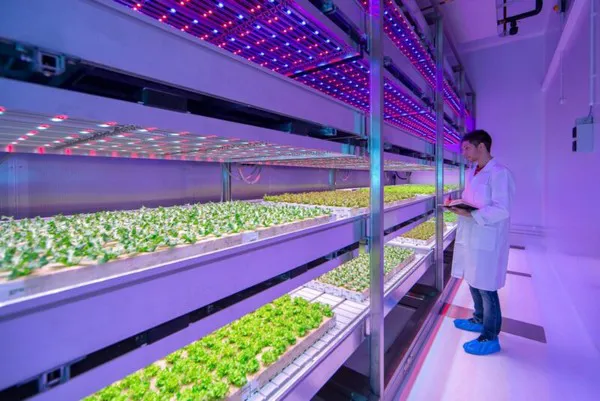
The importance of cooperation
“Multilayer cultivation is the odd one out. We are used to sharing our knowledge. In our world, when looking for container systems, it is normal that you visit five greenhouses where the systems are already running. This way you decide for yourself what best suits your needs. We are also affiliated with various trade associations in which knowledge sharing and the growth of the Dutch horticultural sector is paramount.
But other interests play a role in multilayer cultivation. A confidentiality agreement, also known as a non-disclosure agreement (NDA), is very normal in this world. It stipulates that after delivery of an installation, I can’t visit the product with potential customers. Even though I on behalf of Codema have built this. That did take some getting used to as we can still learn so much from each other.
In the coming years, the market will continue to ask for solutions that limit our reliance on weather influences. Or with which we produce enough food on a limited surface to feed pressure or water-poor area.
Both greenhouse horticulture and multilayer cultivation are good, practical and efficient systems that ensure control of the reliability of growing conditions. The company, in close cooperation with its international partners, provides complete solutions worldwide that enable this reliable production.”
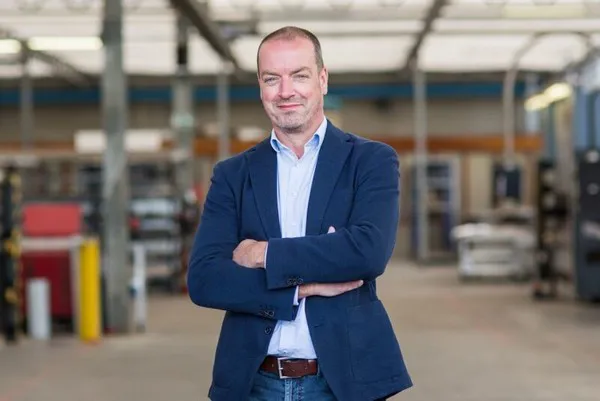
Roeland van Dijk, Codema's logistics specialist
For more information: Codema Systems Group
Codema Systems Group
Oosteindsepad 8
2661 EP Bergschenhoek
The Netherlands
+31105212755
info@codemasystemsgroup.com
www.codemasystemsgroup.com
